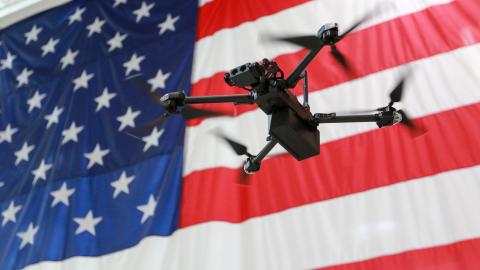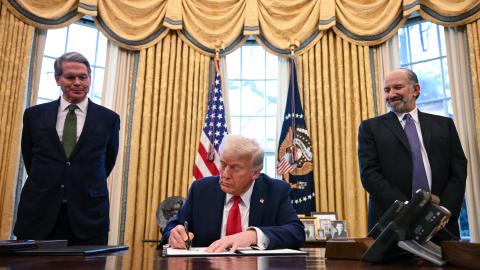This is the time that tries economists' models. It has become the fashion for forecasters to opine on the growth of GDP, the level of unemployment, the inflation rate next year--to at least one decimal place. I have neither the wit nor the courage to attempt such an exercise.
Instead, I offer a comment on one aspect of 2013 that is often overlooked: the state of our political economy. The coming year will see a war between politics and economics, between a political class bent on transferring resources from the private to the less productive public sector and an entrepreneurial class that, uninhibited by policy errors, can power growth at a rate most forecasters do not see in their crystal balls.
Most of the news in the closing days of 2012 has not been good. Holiday spending grew at the anaemic rate of 0.7%, consumer confidence and share prices dipped, activity slowed in some regions, and any chance for other than a stop-gap fiscal deal evaporated as President Barack Obama--"I won"--felt no need to compromise with a fractured and inept Republican House.
The so-called fiscal cliff was a sideshow, distracting attention from two key and unresolved political issues that will play out in decisions about economic policy. The first is the rancorous tone of political life, due less to personality clashes than to profound differences in ideology. The president wants the "rich" subjected to higher tax rates to fund an expansion of government. Many Republicans, with a majority in the House, believe such increases feed a freedom-threatening growth of government and stifle private-sector job creation. In addition there is practical politics: the president wants to keep his left on side and congressional Republicans believe a vote for an increase in tax rates is a vote to join the unemployment queue.
Those competing views foretell a year of battles over spending and tax policy. On January 29 the president delivers his State of the Union address, his favoured platform from which to attack his opponents. The televised meeting of both houses of Congress provides a huge audience and his targets have no prospect of responding before an audience of comparable size. Obama plans to let the country know just what he thinks of the Republican opposition, which isn't very much. Not designed to smooth the path to compromise.
Then there is the small matter of the debt ceiling. Tomorrow the government reaches the limit of what it can lawfully borrow, but Treasury secretary Tim Geithner can juggle accounts to get by until February--a juggling act that might put corporate treasurers behind bars if they emulated the keeper of our nation's books. Unless Republicans waive their right to hold out for spending cuts in return for raising the debt ceiling, they will have what might be their last chance to rein in Obama's spending. The last time congressional Republicans unholstered this weapon America lost its AAA credit rating. But Republicans feel they are in the last chance saloon, with the debt ceiling negotiations their only weapon to force Obama to trade spending cuts for an increase in the ceiling.
The good news is that these opportunities for the expression of mutual distaste are concentrated in the early part of the year. The bad news is that there is no sign that the politicians are prepared to mount a serious attack on the $1trillion annual deficits that are adding to the nation's debt mountain, or to modify the unaffordable retirement, healthcare and other commitments made to America's ageing population.
America's structural deficit--the one that will persist even if the economy fully recovers--comes to almost 7% of GDP, the highest of any rich nation with the exception of Japan.
Offsetting these depressing (in more ways than one) politics are signs of strength in the economy.
* The private sector has been adding jobs by the millions despite the weakness of the recovery and the construction sector. Now, with the average working week for construction workers at its highest level in seven years, hiring in a sector that has bled jobs cannot be far behind.
* The housing market is on the upswing. Sales are rising, and prices have jumped 6.9% this year, the largest gain since 2005. Applications for building permits are up. Inventories of new homes for sale are at a 50-year low, and inventories of previously owned houses for sale are at an 11-year low.
* Vehicle sales continue to be strong as Americans replace their ageing cars and light trucks.
* Consumers are in good shape. Before the Sturm und Drang about the cliff hit their confidence, and before Hurricane Sandy hit an area accounting for about 24% of national spending, consumer spending and incomes rose nicely. Debt payments are claiming the lowest portion of household incomes since 1983, leaving more cash for other spending.
* Fracking has produced a boom in drilling, already created 500,000 jobs, by one estimate, will result in $90bn of new investment and has America on course to a future of cheap energy--gas prices are one-third of those in Europe--that is attracting manufacturing firms to expand here rather than abroad. Unfortunately, fracking and cheap gas make government subsidies for costly renewables even more difficult to defend and might prompt the Obama administration's regulators to bow to environmental pressure groups and stifle shale gas and oil development.
* Corporate balance sheets are strong and investible funds ample. Add policy certainty and investment might move from planning to implementation.
If there were a scientific method of predicting whether political drag will offset the private sector's inclination to go about the business of investing, creating jobs and adding to wealth I would use it. There isn't. All I can offer is my guess that even inept government cannot for long stifle the animal spirits of America's investors and consumers and my best wishes for the new year.

















